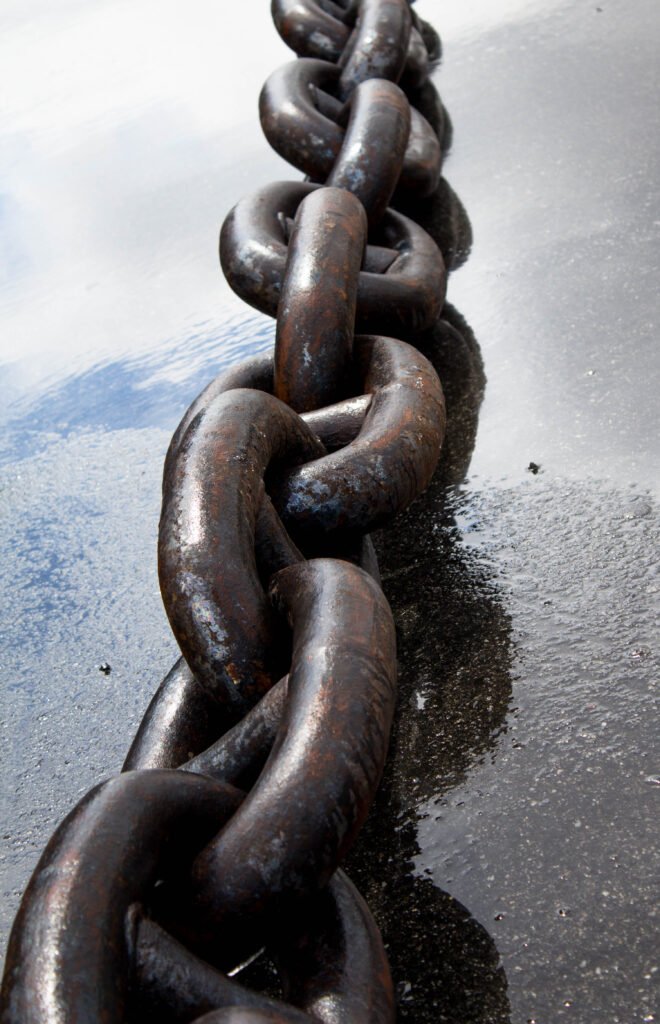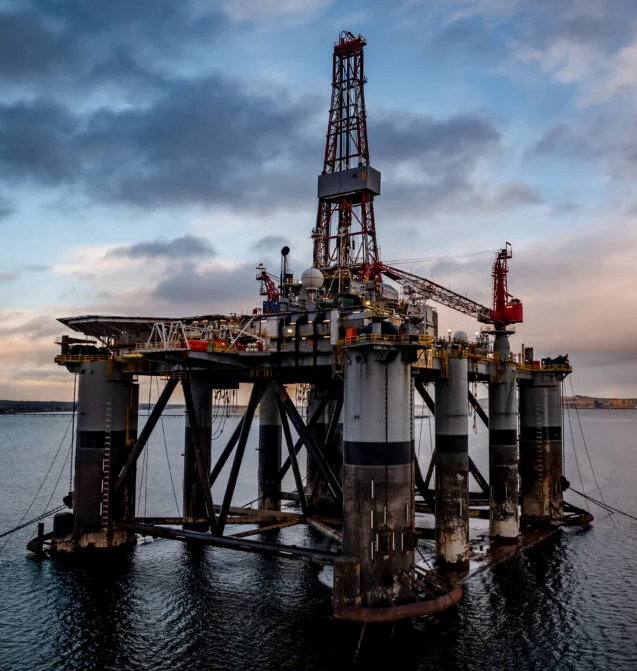
- (+86) 18752670256
- mortonmarine@163.com
Offshore mooring chain is a crucial component employed for fixing vessels and marine platforms (such as offshore oil drilling platforms, offshore wind power platforms, etc.) at specific locations in marine areas. Its primary function is to endure the environmental external forces acting upon the vessel or platform (such as wind, waves, currents, ice, etc.) and transfer these forces to the anchoring foundation at the seabed, thereby guaranteeing the stability and safety of the vessel or platform at sea. For a large container ship that is moored at a port for a prolonged period for loading and unloading cargo, the mooring chain firmly connects the ship’s hull to the mooring piles at the pier, preventing the vessel from drifting under the influence of wind, waves and currents.



R3S level anchor chains,a medium strength mooring chain, the strength is between the ordinary strength and high strength.It is suitable for bulk carriers, general cargo vessels. The minimum breaking load corresponds to the tensile strength of about 600-800 MPa.Mainly high-quality carbon steel or low-alloy steel. The chain links are made by hot forging, but the temperature control and forging ratio during the process require stricter parameters.


Possessing high strength, it is the preferred option for large vessels and those operating in adverse marine environments, such as large oil tankers, liquefied natural gas (LNG) ships, and ocean-going container ships. The tensile strength corresponding to its minimum breaking load is typically above 800 – 1000 MPa, capable of ensuring the mooring safety of vessels in extreme conditions like violent winds, huge waves, and strong currents.Utilizing high-strength alloy steel with a relatively high content of alloy elements. The chain links adopt precise hot forging techniques.

The tensile strength corresponding to the minimum breaking load of grade R5 typically exceeds 1,000 MPa.Grade R5 employs higher-strength special alloy steel with a more complex alloy composition.

Grade R6 has an even higher strength, the material is even more advanced and he control precision of parameters during hot forging is higher.
Grade R6 capable of withstanding more extreme tensile conditions. It is suitable for special marine environments (such as deep sea and polar regions).
Offshore Mooring Chains:Essential Components for Secure Marine Operations
Offshore mooring chains are critical components in marine engineering, designed to securely anchor offshore structures such as wind turbines, oil and gas platforms, and other marine installations to the seabed. These chains provide stability, safety, and reliability in challenging marine environments, ensuring that structures remain in place and protected from environmental forces.
♦ What Are Offshore Mooring Chains?
Offshore mooring chains are metal cables made of high-strength steel or stainless steel, used to fasten offshore structures to the seabed. They are anchored to strong metal shanks, which are embedded into the seabed to ensure stability and durability.
The primary purpose of mooring chains is to provide a secure and stable foundation for offshore structures, preventing them from drifting or being affected by currents, waves, or weather conditions.
♦ Key Features of Offshore Mooring Chains
Durability:Offshore mooring chains are constructed from durable materials that can withstand extreme marine conditions, including high winds, waves, and corrosion.
Load Capacity:These chains are designed to handle significant loads, ensuring that offshore structures remain stable even in strong winds or heavy seas.
Adjustability:Many mooring chains come with adjustable lengths and configurations, allowing engineers to customize the anchor to suit specific structural needs and seabed conditions.
Anti-Collision Devices:Some mooring chains are equipped with anti-collision devices or buoys to help prevent chain tangling and ensure safe operations.
♦ Applications in Marine Operations
Offshore mooring chains are essential in a wide range of marine applications, including:
Wind Turbine Foundations:They are used to anchor large-scale wind turbines in deep waters, ensuring stability and preventing foundation movement.
Oil and Gas Platforms:These chains secure oil and gas drilling platforms, jack-up rigs, and other equipment in the event of equipment failure or weather disruptions.
Marine Structures:Offshore mooring chains are used to anchor various marine structures, such as bridges, cranes, and observation decks, to ensure their stability and safety.
Search and Recovery Operations:In cases of shipwrecks or marine accidents, mooring chains are used to secure affected vessels and facilitate recovery operations.
♦ Importance in Marine Safety and Efficiency
Offshore mooring chains play a vital role in ensuring the safety and efficiency of marine operations. They provide a stable foundation for offshore structures, reducing the risk of drifting, grounding, or damage from environmental forces. Additionally, they help minimize operational costs by preventing equipment failure due to improper anchoring or environmental conditions.
In conclusion, offshore mooring chains are indispensable tools in marine engineering, enabling the secure and efficient operation of offshore structures in challenging marine environments. As marine technology continues to evolve, so too will the role of mooring chains in safeguarding and advancing this critical field. Whether you’re involved in wind energy, oil and gas exploration, or marine construction, understanding the importance and functionality of offshore mooring chains is essential for ensuring the safety and success of your marine projects.
Delivering safe, innovative, economical, and highly effective solutions through a systematic and harmonious value equipment.
We are committed to meeting our customers’ demands with top-tier quality and exceptional service.